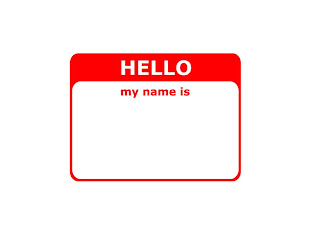We are currently running a Facilitation learning programme with a large organization here in Geneva that is focused not so much on tools and techniques, but more on the design of facilitated learning processes, and what it means to be the person leading them. Overall we are working to help people use facilitation in a very nuanced, thoughtful way rather than as a blunt instrument.
We have a session that is focused on ourselves as facilitators and for that we use any and all information that people have generated over the years (their choice) using diagnostic tools such as MBTI, Strengthsfinder, FIRO-B, etc. They can also talk to friends and family to get some inputs. The objective is to reflect on how our behavioural preferences might manifest themselves in our facilitation and group process leadership work.
It has been a very interesting thought exercise to try to identify times when our individual behavioural preferences might really help our processes, or might get in the way. Just asking the question – How might my behavioural preferences manifest themselves in my facilitation work – is an intervention in itself as it is something most of us don’t consider or consider very often.
We both give examples of where we see our own preferences at work, and take the exercise one step further to talk about how, once we are aware of them, we manage these. We are both very different facilitators, Lizzie and I, and it is interesting to see what we both actively do to make sure that the best outcome is achieved.
I grappled with one of my behavioural preferences recently during a large group facilitation exercise in Mali. My FIRO-B results in inclusion are rather high (expressed and wanted). This is a good thing, of course, when it comes to working successfully with groups, and at the same time it gives me a challenge when ownership by the group is one of the soft outcomes desired of a facilitated process. This might be the case for a network building meeting, one generating an action plan or campaign, or a Youth Call to Action – as was the case in the Mali event.
For any facilitator high in inclusion, turning over the process, standing back and letting the group take over takes deliberate thought and action and can really work against that behavioural preference to be in the middle of everything until the very end. But that ownership outcome demands it. In Mali, at the end of our process, that hand over needed to occur and did occur, but it was a little messy and felt for some as though the process was listing to starboard. As easy as it would have been for me to step in (my inclusion was ready to jump), I didn’t. I was present, I helped from the floor, I gave advice when needed, but the group representatives and the process we had set up took over, and they finished the work, and could revel in their success in doing it themselves.
That was hard for me personally, but very good for the process. Lots of additional relationship building, deeper perspective sharing, and considered decision-making might have been lost if I had run that process myself right to the very end. And these outcomes can be used as social capital when this group meets again.
We use other examples of how our behaviour preferences map over to our facilitation work, and we talk about what we do to manage these, whether it is to design in specific things (like a handover point), to working with a co-facilitator that balances them out, to contracting differently with the group. We all have preferences that both make us good at being facilitators and that also might get in the way. Being mindful of these, and frequently asking the question – How might my behavioural preferences be showing up in my facilitation work? – is a good way to constantly be learning when I’m the Facilitator.
Related blog posts:
What Did You Say? Building a group’s capacity to deal with its own issues
A sampling of good intervention statements to use when you are trying to help a group work through its issues, take control of the process and lead its own development.
You Have the Right to Remain Silent
Reflections on dealing with a group that has different inclusion needs – just because someone is not talking doesn’t necessarily mean that he/she is not engaged. Watch jumping up that Ladder of Inference!
Understanding What We are Bringing to the Party: Group Process Consultation Resources
A list of tools and resources that facilitators and Group Process Consultation practitioners can use to explore their own impacts on a group.









